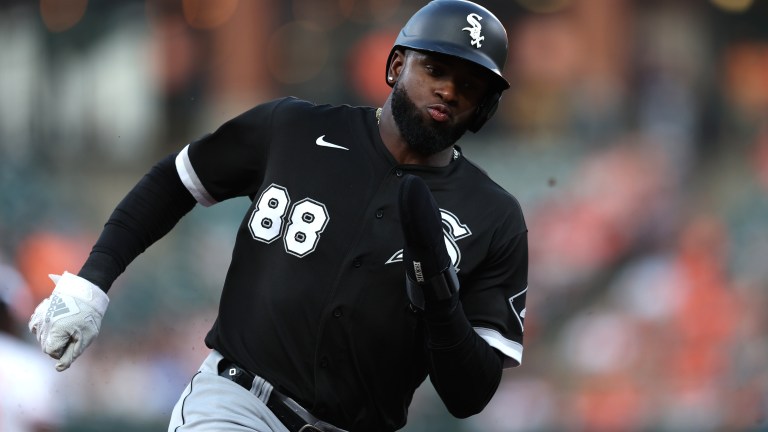What Does a Successful Deadline Look Like for the Chicago White Sox?
One of the biggest sellers on the market has been remarkably quiet so far ahead of the deadline. What moves will the White Sox soon make?

The trade deadline is looming and plenty of teams have already gotten rolling with the Rays leading the selling side of the market as they look to retool following a disappointing first half. Other teams like the Blue Jays, Angels, and Marlins are selling pieces as well, but one of the biggest expected sellers has yet to make a move.
While their counterpart of the North Side is surprsingly buying, the White Sox have yet to make a single trade despite being the most obvious seller ever.
With two potential superstars and a variety of veterans with value on the market, Chicago should be leaning into their rebuild and loading up on young talent.
However, the market for Luis Robert Jr. has never materialized much and the Garrett Crochet trade options are limited with his risk and recent extension demand. So what does a successful deadline mean for the Sox if the market for their superstars isn’t coming together?
The deadline is tomorrow and Chicago has to find a way to capitalize to an extent. Let’s look at each step that can be taken to make it another solid deadline effort as they set their sights on 2026 and beyond.
1. Cash in on Erick Fedde Bidding War
Essentially every contender could use a consistent middle rotation presence as they push for the postseason. Plenty of teams are a logical fit for Fedde and the best case scenario for the White Sox is somewhat of a bidding war for one of the best starters on the market.
Whether it may be a high-end contender like the Dodgers or Phillies, a team pushing for a wild card spot like the Cardinals or Mets, or a team seeking stability like the Astros or Padres, the Sox should be able to cash in.
Fedde’s two-year, $15 million deal, which was somewhat risky in the winter, looks like a bargain now. While there are some concerns about him maintaining production, he’s been nothing but consistent all season and can be a playoff option for the next two Octobers.
The first step for the White Sox in the next day and a half is to get at least one high-end prospect and hopefully a secondary piece in exchange for their veteran No. 2 starter.
2. Trade Garrett Crochet IF Price is Met
This is the big puzzle piece for the White Sox as Garrett Crochet’s market is so fascinatingly complex. I don’t believe that trading Crochet is a necessity for the White Sox and selling just for the sake of selling isn’t logical.
Chicago should explore every trade option for Crochet and try to use their leverage to net a massive return from a high-end contender in need of a controllable arm at the deadline. If an offer including two elite prospects and then some is on the table, make it happen. But if nobody is willing to meet the price set by the White Sox, hold off until the winter.
In reality, this isn’t a concrete step to succeeding at the deadline, but it’s the only proper way to handle the Crochet market. Selling their top pitcher for the sake of selling doesn’t make sense, but he is at the peak of his value right now and could net a huge return.
3. Flip Veterans
This one is very simple. Turn veterans on short-term deals into young assets with any sort of upside. Players such as Tommy Pham, Paul DeJong, John Brebbia, Chris Flexen, and others should be dealt if possible for some young project prospects.
Interest on the market will be pretty minimal for most of these players, but a number of contenders would send a low level prospect for some veteran depth in the form of particularly Pham and DeJong. Whether or not they get much, the White Sox should clear house.
There is no reason to retain any of these veterans and they should be traded or subsequently designated for assignment if there’s no market for them.
4. Hold Onto Luis Robert Jr. (Unless Dombrowski Gets Wild…)
While leaning into the rebuild is the best course of action for the worst team in baseball, selling low is not worth it. Robert has underperformed this season and especially lately after a career-best 2023 season.
His talent is undisputed, but his injuries and lack of consistency has reduced his market. Furthermore, he has three additional years of club control. There is plenty of time left to cash in on Robert if the White Sox continue to trend down and can’t find a way to extend him.
Over the past few weeks, it has seemed less likely that Robert would get dealt. Now, to me it feels like only one team could make this type of move. The Phillies, led by Dave Dombrowski, are the one team that could still maybe make some sense for Robert. However, they just traded for Austin Hays and Carlos Estevez and could be pretty set there.
Unless they are blown away by an offer, holding onto Robert seems like the best option.
5. Move on From Previous Core Players
The last step at this deadline will be defined by the market but there’s a larger purpose than simply trading a few more players. The White Sox rebuild of 2016-2019 failed and that’s an accepted fact now that this team is set for their worst year in franchise history.
Now is the time to officially move from some more players from that core and just enter a new era of Chicago baseball. Michael Kopech is essentially a lock to be traded and someone will take a shot on his upside. Andrew Vaughn and Gavin Sheets should be moved if it becomes possible.
This won’t happen, but players like Yoan Moncada and Eloy Jimenez would ideally be moved or designated for assignment too. Regardless of whether that happens, they’ll be gone after this season. The next era of White Sox baseball will begin to a degree after this deadline.
